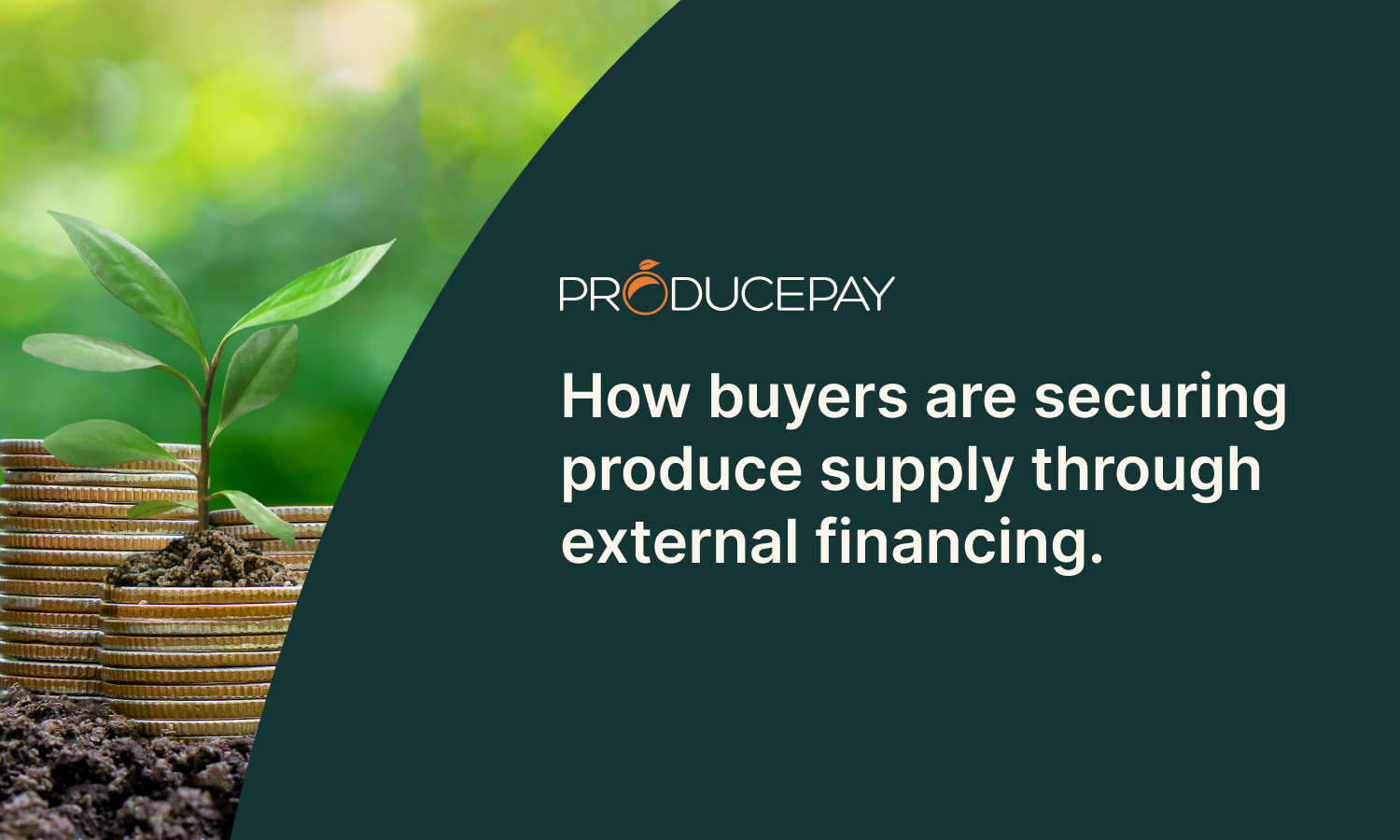
How buyers are securing produce supply through external financing
In today’s global fresh produce supply chain, consistent quality and volume are not only an expectation—they’re non-negotiable requirements. However, for many growers, the lack of access to strategic working capital hinders their growth potential.
With adequate financing, growers can invest in technology, infrastructure and resources needed to improve their efficiency, minimize risks, and deliver consistent, high quality produce for their buyers.
For innovative growers and buyers, external financing solutions are increasingly bridging this gap, empowering growers to adopt the tools and practices needed to meet the high standards of international buyers with stable, high-quality supply.
Farm capital as a competitive advantage for growers
Even the most capable and growth-oriented producers can be limited by lack of access to financing. This is especially true in developing regions, where traditional farm credit services are often inaccessible, or require land as collateral.
Strategic capital empowers growers to optimize operations during all stages of production. From acquiring higher-quality seeds and fertilizers to implementing better post-harvest practices like cold storage and efficient packaging, farm capital allows them to make investments that directly impact product quality and shelf life.
These improvements not only reduce losses and increase margins—they also help growers stay competitive in international markets, creating a stronger and more predictable supply base for buyers.

Financial strength builds reliable, high-quality supply
Capital isn’t just about survival—it’s about confident growth. When growers operate with sufficient working capital, they no longer make short-term or reactive decisions. They adopt better practices, scale efficiently, and align with buyer needs more effectively.
The result is a more reliable, stable, and quality-driven supply of fresh produce. For buyers, this translates into shipments that consistently meet safety, appearance, freshness, and ESG standards.
Buyers that work with financially strengthened growers benefit from lower volatility, fewer disruptions, greater availability of product during peak demand periods, and enhanced brand reputation through customer satisfaction.
Discover: Keys to ensure a consistent fresh produce supply
External financing to build stability in the supply chain
Some large buyers already support growers through direct contracts that offer partial payments, access to credit, inputs, and technical support.
Evidence shows that these contracts have a meaningful impact: a study conducted in Benin showed that farmers with access to contract farming increased their area planted by 23%, yields by 29%, product sold by 140%, and income by 52%.
However, even when this benefits the buyer, extending farm credit directly can strain a buyer’s own cash flow and introduce financial and operational risks—especially when managing multiple growers across regions.
This is where external financing offers a smarter alternative. By connecting growers to third-party capital, buyers empower their supply partners without tying up their own capital.
This way, growers receive the working capital they need to improve productivity and quality, while buyers protect their liquidity and benefit from a strengthened supply chain.
Strategic capital for confident growth
External financing is a powerful growth enabler that allows growers to invest in their farms, improve operations, and scale efficiently. However, the lack of access for the agricultural sector limits the growth potential of growers.
ProducePay’s Pre-Season solution addresses this gap with a financing model that enables growers to access significant upfront capital ahead of the season without draining their cash reserves or putting their land at risk.
With this capital, growers can make essential investments: upgrading inputs, implementing better post-harvest practices, hiring skilled labor, or expanding—all of which translate into higher yields and improved crop quality.
For buyers and marketers, this model brings assurance that their supplier base is well-capitalized and capable of delivering according to schedule and specifications, without impacting their own cash flow.
Sources: Green.org, Aplu, Cega, The Farming Insider

